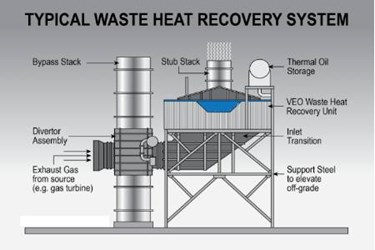Industrial Heat Used To Make Waste Water Drinkable

Engineers from Siemens are exploring methods for recycling the surfeit heat generated by industrial processes and using it to convert waste water into potable water.
Engineers from Siemens in Germany have built a demonstration plant which is capable of employing the low-temperature waste heat emitted by industrial processes for the conversion of waste water into potable water for consumption.
The waste water flows into the prototype via insulated piping, where it traverses a series of heat exchangers which employ the excess heat generated by industrial equipment to bring the water to a higher temperature.
The waste water then enters an evaporator where it is converted into steam and channeled upward into a condenser via the use of an electric fan. The condenser will then be able to convert the steam back into pure water which is potable, as well as concentrated waste water which can be more conveniently disposed of.
The chief advantage of the new prototype devised by the German engineers is its ability to utilize industrial waste heat lying within the low-temperature range of between 70 to 120 degrees Celsius, which is difficult to employ in an efficient manner despite containing valuable energy which can be applied to ancillary processes.
The key to this ability is the development by Siemens engineers of a heat pump which makes use of a special process fluid for the heat cycle and which is capable of pushing the temperature of moderate waste heat to as high as 140 degrees Celsius, thus increasing its range of potential applications.
The heat pump can be used to give a boost to geothermal sources of heat as well as industrial waste heat, and for other purposes such as the provision of warmth to building.
Potential applications for the water purification technology include the purification and conversion of waste water generated by the brewing industry or oil drilling operations.
Researchers now plan to expand the scale of the prototype with the construction of a pilot facility capable of processing 25 cubic metres of water per hour – enough for the technology to be used for the treatment of the large volume of waste water generated by certain industrial processes, such as bottling in brewery operations.
Source: Siemens
